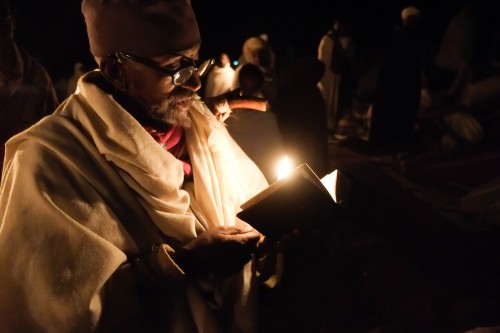
Fuji XE-1, 1/10 @ 2.8, ISO 6400, handheld.
I’m convinced. After a week in Lalibela, Ethiopia, and a safari in Kenya, I’m ready to leave my heavy pro DSLR gear at home more often. I went to Ethiopia with a Fuji XE-1 and a Leica M (240), both with a small kit of lenses (18-55 and 55-200 for the Fuji, and 21mm, 50mm, and 75mm for the Leica), and went mirror-less all week. It wasn’t my first time going so light. The last time I went to Italy for a month I brought only the Fuji and 2 lenses, but that trip had less hanging on it, and the conditions were less taxing. Below are my thoughts, in no particular order, after giving these cameras a run for their money. But first, the usual caveat: I like gear. I like the way it feels in my hands when it feels right. I like gear that gets out of the way as much as possible. But I’m OK with constraints, I know there is no perfect camera, and ultimately cameras don’t make photographs – photographers do. So don’t look for pixel-peeping here. And don’t look for me to tell you to get rid of your DLSR gear. For some that might be a great move, for others not so much.
It was only a few years ago I was lugging 2 pro-size DSLR bodies and a kit of large, fast, heavy lenses. It wore me out. It made me take myself too seriously. It made me stand out in a crowd and intimidated others. And since breaking my feet in Italy I find walking tough and struggle to do my job with such heavy gear. What a relief, then, to walk all day with two much lighter rangefinder bodies and a couple lenses. I hardly noticed it was there. And when things got really tight, it was easier to manoeuvre without the bulk of large holsters at my side. I could stay out longer, walk further, and enjoy myself more – and this translated to more opportunities and fresh eyes to see those opportunities when they arose.
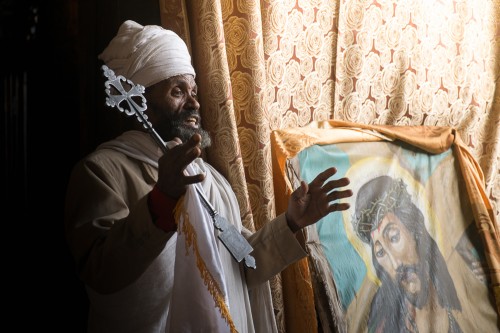
Fuji XE-1. 1/100 @ f/4.0, ISO 800.
The Fuji XE-1
I really like this camera. It makes beautiful 16mp digital files and performs well in low light up to about 3200, which is where it maxes out for me, at least in colour. But for a guy who used to very reluctantly go up to ISO 800, this is about as much latitude as I need. The focus is fast enough for me for the kind of work I was doing, and when it nails the focus it nails it well. I understand the XE-2 is even better. Remember, I’m not photographing sports or fast-moving subjects. But I didn’t once feel it couldn’t keep up with me (if I’d had longer lenses I’d be trying for images that might quickly have shown the limitations here.) The available lenses are excellent for as light as they are, and I could happily photograph 80% of the stuff I love to photograph with just their 14 or 18mm. I’ll be looking into their 24mm (roughly 35mm) when I get home, in part because it’s faster, and in part because it’s one of the few lenses Fuji puts a focus scale on (the other is the 14mm), and that’s a no-brainer to me. If you want to access other lenses, there are adapters to use the Leica M lenses, but then you’re manual focus only. Both the Fuji and Leica are also more discreet – even in burst mode they’re much quieter. Want something even quieter, get a Fuji x100s. Almost silent.
What don’t I love? Well, it’s quirky. It’s a small camera and there are a few too many little buttons. I can’t tell you how many times I end up in Macro mode accidentally. The dials turn a little too easily and I’ve often ended up with my EV compensation dial at +2 or -2 when I didn’t put it there. And then there’s the display in the electronic viewfinder. Move the exposure around all you want and there’s no apparent change to the image, nor to the histogram that’s displayed. My Leica shows real-time adjustment on the LCD or EVF, and the histogram changes too. With the Fuji I need to make the image, then look at the histogram on the resulting image during playback – it’s very clunky. And thought I understand the location of the button has changed, I find the weird manual gymnastics I have to do to change my focus point, and with both hands no less, frustrating. Oh, and when you shoot in burst mode – either 3 or 6 fps – it’s really, really awkward to look through those frames. For whatever reason only God and the weird engineers at Fuji know, the burst shots are clustered together and not viewed as individual frames. It’s like their stacked in their own group and you’ve got to go through yet another series of counter-intuitive (to me) button-presses. I shouldn’t need to know a secret handshake to look at my images. But when I do, the image quality is staggering and that, combined with the small package and reasonable price, is why people are flocking to the Fuji. Exceptional image quality.
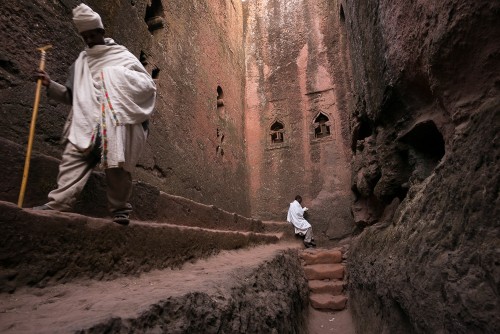
Leica M (240). 1/60 @ f/4.0, ISO 800
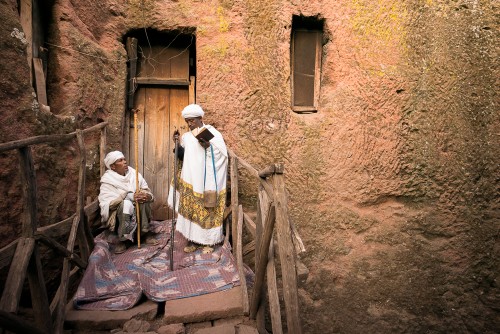
Leica M (240). 1/60 @ f/5.6, ISO 800
The Leica M (Type 240)
What a beautiful camera to hold and photograph with. A manual-focus-only camera, it takes some getting used to but I see myself using this happily, even as my main camera, for years to come. It’s like the cameras I grew up using and I’m amazed at how muscle memory has kicked in. I can work really fast with the Leica after only 3 weeks. The ergonomics work for me, the image files are beautiful, and as long as you don’t ask it to do much in low-light, it’s amazing. Even then, I like a little grain and I shot a balloon launch at 6am in near darkness @6400 and the files are better than I expected. And when you can hand-hold this and get sharp images at almost 1/2 second shutter speed, there are times I just don’t need the higher ISO.
I used a Leica 21/3.4 lens for almost the whole trip and quickly got used to zone focusing and just raising the camera to my eye and shooting. I use the EVF (electronic viewfinder) that’s available separately, and with it I get an in-viewfinder histogram, an accurate sense of my framing, and the ability to hinge it up and shoot from my chest while looking down. Is it expensive? Yes. Is it worth it? For many people, maybe not. And until I started working with this Leica M, I was ready to just use Fuji, and for the price of the Leica and one lens you could get 2 Fujis, every lens they make, and have money left over to go somewhere amazing. But a couple weeks with it and I’m hooked. You can pry it from my cold dead fingers, if you’re willing to fight off my ghost. For me, it’s that amazing. But it’s pricey and the lenses are astonishingly expensive.
So why the Leica at all? Why spend so much on a camera? Without doubt the images are beautiful within certain constraints. But, with apologies to the purists, so are the images from the Fuji. Different, but beautiful. For me it comes down to process. It’s the reason craftsmen all prefer one tool to another. It fits better in the hand, gets out of the way when it matters, and allows me to work the way I work best. For me that’s the beauty of the Leica. It’s simplicity is worth a premium to me. I like that the buttons and dials are kept to a minimum, and I like that when I use zone focusing and I nail it, the Leica is faster than any of my DSLRS in terms of seizing the moment. All of that means I am more present in the moment and that is more important to a photographer than anything. Whatever camera does that for you is the right camera. Little else matters.
One of the barriers to my getting a Leica rangefinder before (aside from the price) has been the focusing. It’s fully manual and I’ve never found focusing a rangefinder as easy as I’d like. A friend of mine recently told me his efforts to focus his M8 were like a monkey f*cking a football. I’m not sure what that means but it paints a picture. That’d be one frustrated monkey. With the M, the electronic viewfinder (an additional accessory) and LiveView on the rear LCD helps enormously. I still use the traditional optical viewfinder to focus at times, but when using the EVF and LiveView there’s now a focusing assist which zooms in to 5x or 10x the moment you touch the focus ring, and focus is confirmed with focus peaking, the in-focus edges being highlighted with red. Combined with zone focusing (I’ll discuss this in a future article) the only other thing I needed was mindfulness, and this camera allows me to remain in the moment beautifully (as long as the EVF doesn’t hang, which it does once in a while, requiring a quick on and off of the camera).
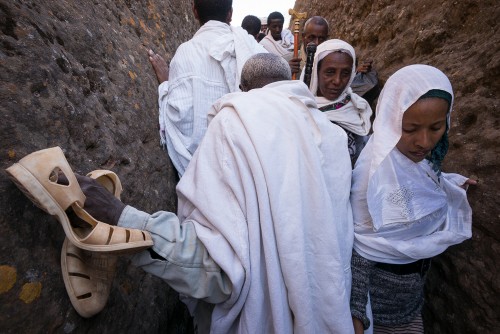
Leica M (240). 1/90 @ f/8.0, ISO 800
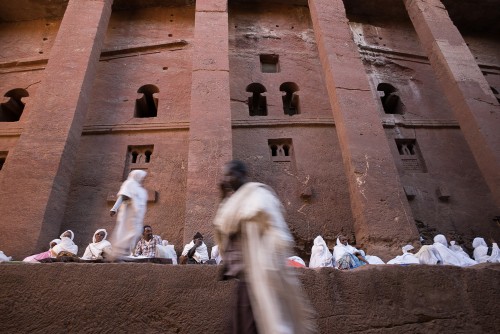
Leica M (240). 1/15 @ f/8.0, ISO 500
Going Mirrorless
Going without a mirror is not the point. It’s the advantages these smaller cameras bring, and more and more those advantages are ours without the loss of image quality that (among other reasons) once drove us to larger DSLRs. Will I ditch my DSLR gear? No. I’m not really a one-or-the-other guy when I don’t have to be. For the foreseeable while there will be times I want my tilt-shift, super-telephoto, and macro lenses. I’ll want the DSLR kit for the weather sealing, too. My next safari will be made with two systems – the Nikon with the largest lenses, and the Leica with a couple primes. But would I do a trip like this, or Lalibela, or Italy, or even the Yukon trip I did this year, with just the Leica and Fuji? I sure would. As long as weather sealing, large lenses, and really rapid bursts were not needed.
Are the Fuji or Leica the only mirror-less options? Not at all. There’s also Olympus. And Sony. And Panasonic. All making mirror-less cameras with pros and cons. For me the Leica wins for image quality and feel, but before I started using it, I was really, really happy with the Fuji. Others are faster (Olympus OM-D is crazy responsive and has killer optics) or house higher-resolution sensors (Sony and Leica use 24mpx, which is a sweet spot for me, and Sony too has amazing lenses), so you’ll decide on what matters to you and get the camera that works for you. Get it into your hands, play with it, and know what matters to you. But remember, it’s really, really unlikely that your new camera will make you a better photographer – that’s your job.
The hardest part of the transition, and my biggest question, was about confidence. Were these cameras going to be able to give me the images I wanted? Could I trust them? The answer has been a resounding yes. It took a while but I’m happily there now. The switch to an electronic viewfinder also took a little time, but now that I’m used to it, I love it. The quirks of the Fuji still make me a little crazy – I can go from “I love this camera!” to wanting to throw it out a window, pretty quickly. But I’m learning.
Since most of you are more interested in my reaction to the Fuji, here’s my final word on it: I love using it (despite the quirks, which are not few). I love the images it makes. I like the growing lens selection. With an exclusively electronic viewfinder, the batteries run down faster than I’d like, so I carry a few more than I think I’ll need. Out of the box it’s lighter than I like and feels hard to hold – so I added a Really Right Stuff L-plate and grip. The strap it comes with is way too short and I hate branded straps, so I got a beautiful leather sling from Cub & Co. 16mp is fine, but I’d prefer 24mp, particularly as I often crop to 4:5, 1:1, or 16:9. A few more pixels would be great for those bigger prints. A 24mp, full-frame Fuji XE-3 would have me at hello.
For the vast majority of my work for the foreseeable future, I’ll be using my Leica with Fuji gear on the other shoulder. I’ve lost nothing in image quality for the kind of work I do, and the contexts in which I photograph. I’ve gained freedom. Some will find that freedom in larger DSLRs, I find it now in the lighter gear. My final recommendation: if the idea of working much, much lighter is appealing, then we’re at the point where the smaller cameras are well worth looking at for many applications. The Fuji XE-1 or XE-2 is a great place to start that search. If the idea of working light, and with the greatest simplicity, appeals to you – and your budget allows it – the Leica M (240) is a beautiful, beautiful camera, and with it Leica becomes a truly workable tool for me, for the first time.
Remember, it’s about the right tool, in the hands of each craftsman, for the job. For some the Fuji, or another mirrorless option, will do it all. For others, especially photographers working where longer lenses, fast action, and harsher conditions are an unavoidable consideration, they might remain an attractive second system for work that doesn’t demand as much.
Wow, that was a lot of words! I know this is a bit of a jumble of thoughts. I won’t be getting a gig doing camera reviews any time soon. Still, I hope it’s helpful. Any questions? Just don’t make them too technical, there are others much more suited to that dialogue than I am.
*Update – You’ll see it in the comments but it looks like a firmware update for the XE-1 was released since I left home and it addresses some of the software-based issues, like real-time exposure previews and the viewing of burst mode stacks. Brilliant. Thanks for the intel, friends. Much appreciated!

Comments
Pingback: The end of the DSLR? | Institute of Digital Photography
Pingback: Travelling Mirrorless | Stephen D'Agostino Photography
Hey David,
Shoot more mirrorless stuff and I will guarantee you will ditch the DSLR 🙂
On a side note though, you are the LAST guy on earth I would have expected to buy an M 🙂
Fuji X-T1
Hello, you had mentioned in a previous post about mirrorless that you had taken also the sony rx100 with you. Nothing worth mentioning about it in this current post?
thank you.
I brought that camera for underwater work. Still in Zanzibar and doing my SCUBA course. Once I’m done that I’m hoping to have more time to make some photographs. So, no, at this point, I’ve not used it.
Great to hear you are in Zanzibar! I live in Dar Es Salaam!…
How long will you be there for? I guess you’ve checked out Stone Town already. A popular spot in the Livingstone bar where you have great sundowners where kids like to make spectacular jumps in the water.Please let me know if you are in Dar before leaving the continent, we could have a cold Tusker somewhere.
Hi Boinet – Thanks for the note and the offer of a Tusker. Sadly, it’ll have to wait. We fly straight from Zanzibar back to Nairobi, no stops in Dar this time. 🙂 We are heading into Stone Town, though, so we’ll check out the Livingstone! Thank you!
Took the plunge and sold my Canon 70-200mm IS II lens to finance a Fuji x100s. Love it. I’ve taken more photos in the last 3 weeks than in the last year with my Mk III.
Started a little NY Street Photo blog to share them with friends and anyone else who cares to take a look!
http://kenwallace.tumblr.com
Good read David and brilliant images.
V.
Great to read your post. Wonderful photos. Thanks for sharing 🙂
On the Fuji x-e1 press and hold the Menu/Ok button until the Lock On indicator appears. Pressing and holding again will unlock the Macro button. This solves the problem of accidentally pressing the Macro button!
Pingback: The Mirrorless Post | xzine
David,
Appreciate the lack of brevity in your commentary :). I also enjoy gear quite a bit, but I can get a good take on technical capability from the ubiquitous review sites.
What is always a challenge is finding someone that can effectively translate their -experience- with the product into something others can appreciate. For that, I thank you:)
Cheers,
JT…
The photos are great! This is definitely great information since I will be leaving for Haiti in two weeks. There is no way to take a DSLR there. I will be moving around way too much, not to mention how HEAVY all of that gear is! Thanks for the info!
Hi David,
First time commenter, but have viewed your work for quite a while (and just ordered your books for our school – I work at an international school in the Philippines).
I agree about the angst and joy with using the Fuji. I have been using full frame Canons since the original 5D (and now the Canon 6D is my primary). I added the Fuji X-E1 last year as a way of traveling lighter here in Southeast Asia. As you note, it’s far less intimidating, especially when interacting with other cultures and intersecting with language barriers.
The Fuji IQ is quite fantastic, but as much as I try, I still am not adapting to the EVF. Something about it ironically feels less connected to the scene. Perhaps if I had jumped in with two feet instead of still committing to a bag of L lenses, I’d be in a better position, but as it stands I simply can’t make that my primary camera yet.
Having said that, I generally prefer prime lenses and yet have only picked up the kit 18-55 for the Fuji, so perhaps I’d feel differently if I had the 23mm or new 56mm. Just not sure I want to commit to those until we see what’s next for Fuji in terms of a potential FF.
At any rate, it does come down to the experience, and the images you capture with the tools at hand. So often when I travel I do feel bogged down by gear, so perhaps I simply need to learn to travel lighter!
Keep up the great work. Cheers from Manila.
Clearly the newer mirrorless cameras are wonderful replacements for larger, heavier, dSRLs in many cases. What strikes me the most is the size difference in the lenses for my Olympus OM-D E-M1. The 12-40mm PRO F2.8 is a fraction of the size of the Nikon 24-70mm F2.8!
And that combination is weather proof and very responsive as well.
My D3 is not quite ready for eBay. But as I get better with the Oly, it may be soon.
David, great post, thank you. I am using the Fuji XE-2 and some of the issues you raised (such as the real-time exposure preview and moving the focus point) have been addressed. Perhaps also with the firmware updates to the XE-1).
Hi David. Just commenting on this part “I find the weird manual gymnastics I have to do to change my focus point, and with both hands no less,”. With the latest firmware, you can configure the Fn button (in lieu of the AF button) to change your focus point for a one-hand operation. I know most people want to use the Fn button to change the ISO but in my case, I find the Auto ISO/minimum shutter speed setting preferable, hence the configuring of the Fn button for my focus point.
I came to this conclusion when I found myself using my Olympus E-M5 for 95% of the images I shot on safari in Namibia last year. Mr. Nikon D700 only came out to play about 3 or 4 times over a period of 32 days on that trip.
In fact, I’m so into shifting this DSLR paradigm that I’ve started a website specifically for people interested in making the switch. Check out fotozones.com and chime in if you like.
I’ve been using the Nikon 1 V1 which I bought cheap when the V2 launch forced Nikon USA to dump the excess inventory. It has a smaller sensor than the rest of the compact system cameras which has a few advantages to go with the obvious disadvantages. I don’t love it and I don’t hate it. What I do like is that it is small and light, has fast autofocus and shutter, the inexpensive 10mm f2.8 lens (which has the FoV of a 28mm lens on a 35mm frame camera) makes it jacket pocketable and it uses the same battery as my D800, so I have a fair few spares. What I really miss is subject isolation with the lenses that I have, ease of manual focus and the option of a 35mm equivalent prime. I’m hesitant to invest in the expensive 32mm f1.2 (85mm equivalent) which would solve the first issue until I see how the camera system evolves as a whole.
I enjoy using a compact system enough that if the Nikon doesn’t make manual focus easier on the 1 system or doesn’t release a 13mm prime in the next year or two, I will probably end up buying a Fuji or Olympus system. Like you, I will continue to use it to complement rather than replace my DSLR system.
Wow! Like all the shots, but LOVE the top one… handheld @ 1/10, wow again. So intimate an image.
Some very good info here, and the images to back it up.
Thanks, David.
Appreciate your feedback and views on mirrorless cameras. I have started using the X Pro 1 and I really love it, the 35mm 1.4 lens is fabulous as is the 14mm lens. Yes I am not ready to give up my D3 or D700. I will continue using both!
Usually when I go out the X Pro 1 is the camera I go for!
David;
I shot lots with my Fuji XE-1 last year and upgraded to the XE-2 as soon as it came out…big difference and greatly improved focusing. The Lensmate Thumbrest will protect your exposure dial from accidentally getting changed. The kit zoom is excellent and F 4 is a great base point to leave the aperture. The upcoming 16-55 F2.8 and 55-140 F 2.8 should make lots of us “Pros” happy. Also, the FujiX-Forum.Com is a wonderful website for questions and answers.
I agree with others, the Firmware update addresses some of your issues. And the E2 does as well. The new X-T1 that will be announced on the 28th looks to go even further providing weather sealing, an optional battery grip, the promise of 8fps and maybe a tilt-able LCD.
David–Great images and great post. We seem to be of like mind regarding gear and making images, and I very much enjoy reading through your blog posts.
Regarding the X-E1 and some of your frustrations: the late January firmware from Fuji fixes several of those annoying things that irritate me as well. Namely, sequences playback normally now, and you can now toggle exposure preview in manual mode, so that the histogram and view in the VF WILL change.
The X-E2 goes a step beyond and stiffens up the dials, but then frustratingly removes the View Mode button, a big irritation.
You may be too far flung to take advantage of the firmware update at the moment, but I highly recommend it!
Thanks for the great post, and good to see you light and happy. On most of my recent trips, I’ve been very satisfied w/ my Sony NEX-7 (with Zeiss 24/1.8 or Leica lenses) and/or newer Leica M (with Barton braided leather strap, RRS plate/grip, and 21/3.4, 35/1.4, or 50/1.4). On safari I’ll still take my Canon w/ 300/2.8, but that is about the only time I use the DSLR these days. Let me know if you ever come to Uganda (free room in Kampala). Cheers!
I think you must upgrade your firmware.
in the latest you can change the focus point in the direccional buttons. Exposure preview is now an option and burst images are now fully separated….
Love your work.
Keep it going!
Pingback: The Mirrorless Post | David duChemin › By TOMEN
Thanks for the thoughtful comments. I also shoot with an XE-1 with a RRS grip (what a find!), and have similar thoughts. I’d add that you can lock out of the macro mode.
An additional frustration; I wish I could zoom in live view (LCD) mode for focusing.
There is an option, by the way, to have a electronic focus scale at the bottom of the LCD in manual focus mode.
One interesting thing I didn’t anticipate is the effect of its size. Sometimes I enjoy being a bit less conspicuous, and sometimes I’d rather be taken more seriously (nothing grabs attention like pro DSLR and a long lens).
At any rate, the next time I’m in Guatemala, this is what I’ll bring.